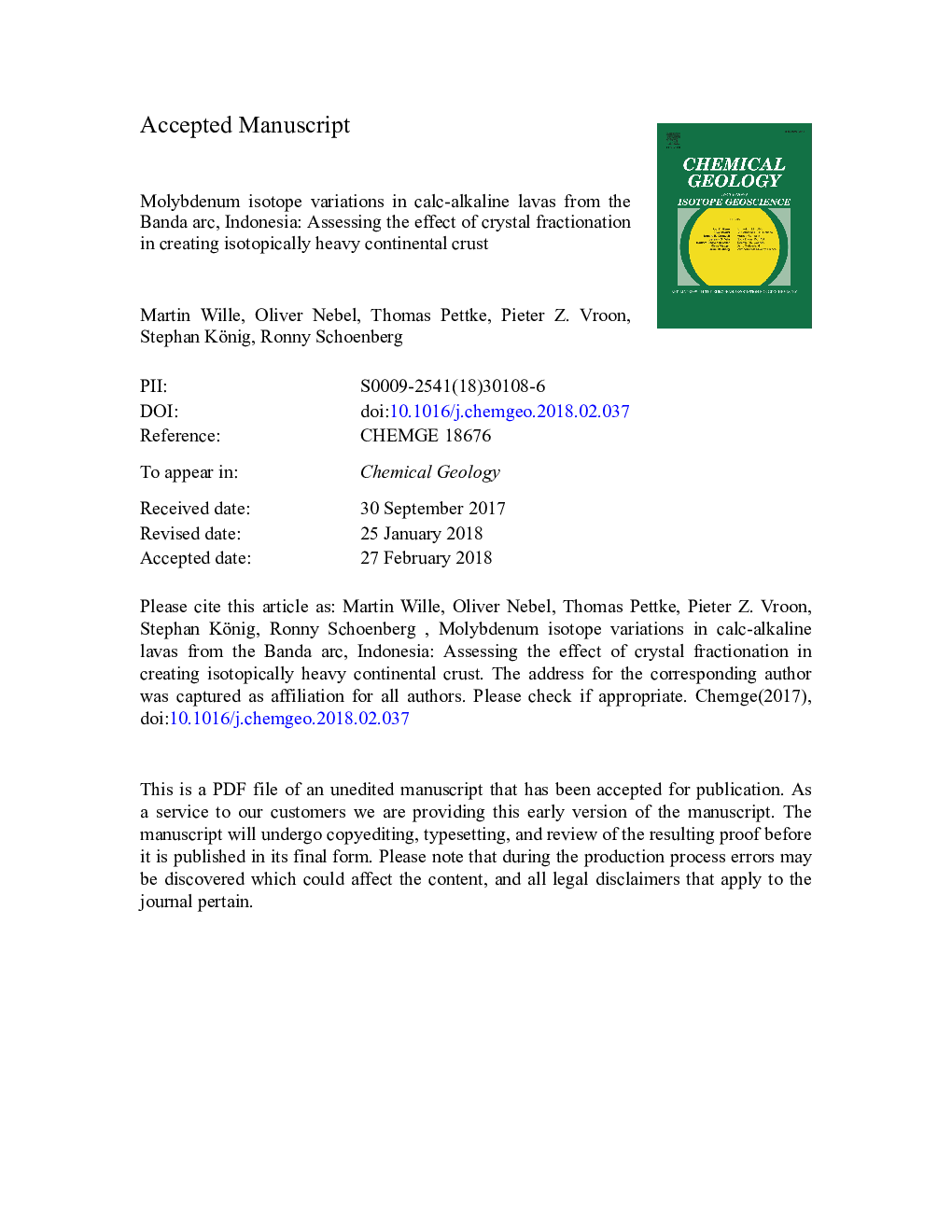| Article ID | Journal | Published Year | Pages | File Type |
|---|---|---|---|---|
| 8910234 | Chemical Geology | 2018 | 50 Pages |
Abstract
Banda Arc lavas exhibit Mo isotopic compositions covering a large range from â0.48 to +0.24â° in δ98/95MoNIST3134. We find that, combined with published data from other subduction zones, the majority of arc data are isotopically heavier compared to its presumed mantle wedge source or mid-ocean-ridge basalts. Furthermore, arc lava Mo isotope signatures show an apparent covariation between indices of amphibole-clinopyroxene fractionation from the melt. Generally, heavier Mo isotopic signatures are associated with higher degrees of REE fractionation expressed as λ1, λ2, and Dy*/Dy, high Ca/Al, and higher Sc contents. These observations can be best explained with an open system magma reservoir where fractional crystallisation, recharge and eruption are tightly linked. Notable exceptions in the Banda region are four samples with isotopically light Mo. Three of these isotopically light lavas indicate the assimilation of an isotopically light Mo reservoir with heavy δ18O and radiogenic 87Sr/86Sr-206Pb/204Pb, tentatively identified as lower arc crust. Together, our data demonstrate, in line with previous findings, that magmatic processes modify the Mo isotopic composition in arc lavas, thus adding complexity to the Mo isotope systematics inherent to subduction zones.
Related Topics
Physical Sciences and Engineering
Earth and Planetary Sciences
Geochemistry and Petrology
Authors
Martin Wille, Oliver Nebel, Thomas Pettke, Pieter Z. Vroon, Stephan König, Ronny Schoenberg,
